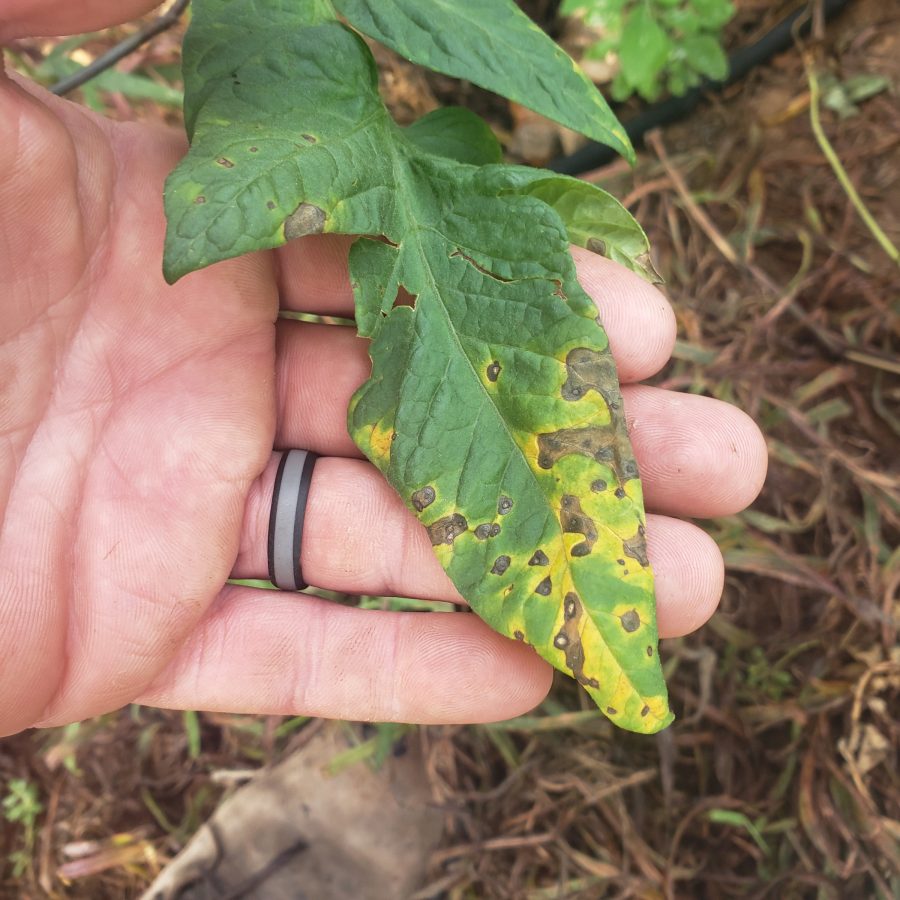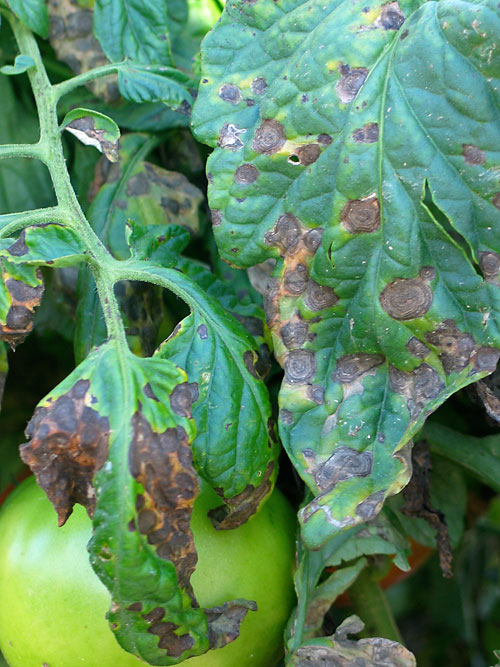
When dealing with early blight or Septoria leaf spot, pruning off the affected leaves and stems immediately may slow progression enough to get it under control. Unfortunately, as with most serious diseases, blight is incredibly difficult to treat unless you catch it before it starts spreading rapidly.

These will usually only appear on the leaves, not the fruits, making identifying much easier. Look for small, rounded spots that start out yellow, eventually turning brown and then black. Septoria leaf spot requires a close eye to spot as symptoms begin on the leaves closest to the ground, working their way up. Late blight is more common in cooler weather, as opposed to early blight and Septoria leaf spot that are more common in warm and wet weather. Fruits will also begin to rot and turn brown, usually from the top of the fruit traveling downwards. Stems will turn black, developing a white fluff containing spores of the fungus. These areas of damage may also be surrounded by slight yellowing. They also have a fuzzy appearance as if the plant is infected with mildew. Look for irregular discolored grey or brown patches that start at the center of the leaf and travel outward. Leaves also develop spots when tomato plants are infected with late blight, but their appearance is slightly different. Any area that the problem appears on will become damaged, with leaves dropping, stems becoming sunken, and tomato fruits falling off the plant. These spots may be surrounded by a yellow ring as they spread, but can also be solid brown. If the problem spreads, the spots will begin to appear on new leaves, stems and even the tomato fruits. These spots have concentric rings that make the area look like a bullseye.


When your tomato plant is infected with early blight, you’ll notice brown spots appearing on older leaves. What Are The Signs of Blight On Tomatoes? Early Blight It is also far less damaging to your plants than the other types of blight. This blight is considered the easiest to treat and control, as long as you catch it early enough. Early blight is most common in wet and humid conditions where fungi thrive.Īnother problem that pops up during wet weather is Septoria leaf spot, named after the fungus Septoria lycopersici. This fungus resides in the soil, popping up when conditions are right and spreading around your tomato and potato plants. This event gives just a small hint of how damaging late blight can be.Įarly blight is another type to look out for, caused by Alternaria solani. It is caused by Phytophthora infestans, the fungus that lead to the devastating potato famine in Ireland in the 19 th century. L ate blight is one of the more common and usually the type referred to when using the term ‘tomato blight’. There are three different types of blight that commonly attack tomatoes, each with varying levels of damage. But the exact symptoms and subsequent treatment will largely depend on the type of blight you are dealing with. The first signs of blight generally appear on older leaves of the plant, spreading from there to newer leaves and even to the fruits. It is a common problem in tomato gardens and spreads rapidly, quickly spelling the end of your tomato growing season if not prevented or controlled. What is Blight?īlight is a disease that affects not only tomatoes but several common crops in your vegetable garden. Let’s take a look at tomato blight and how it can be treated or prevented so you can secure your harvest this year. Tomatoes are incredibly prone to pests and disease problems that threaten to ruin your entire harvest for the year (and even future years) if not tackled.īlight is a term most tomato gardeners will be familiar with and incredibly fearful of. However, these benefits come with one major caveat – disease.

Tomatoes are one of the first crops people consider growing in their gardens, appreciated for their ease of growth and versatility.


 0 kommentar(er)
0 kommentar(er)
